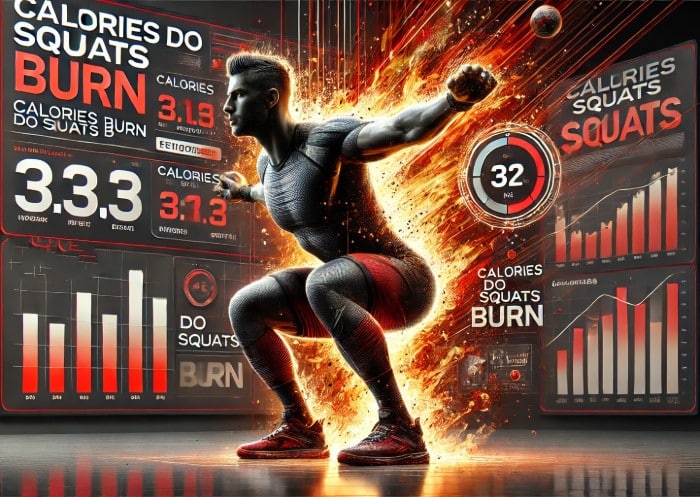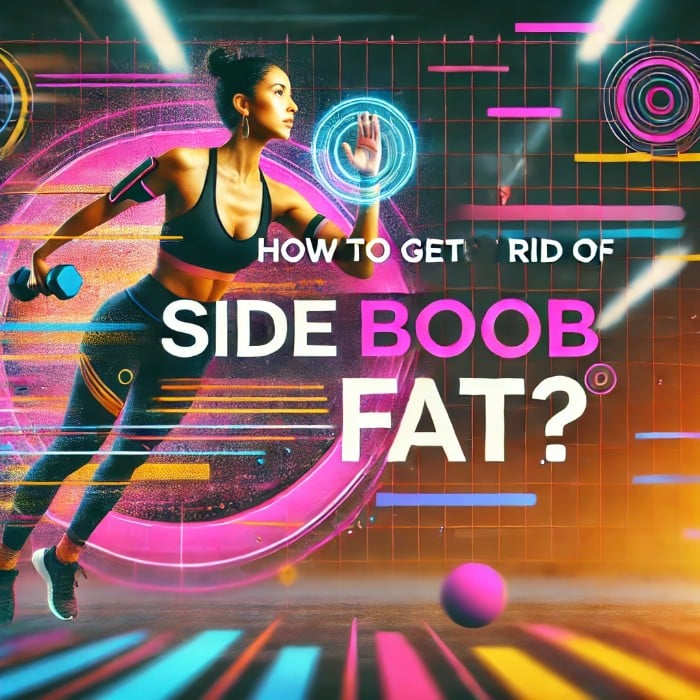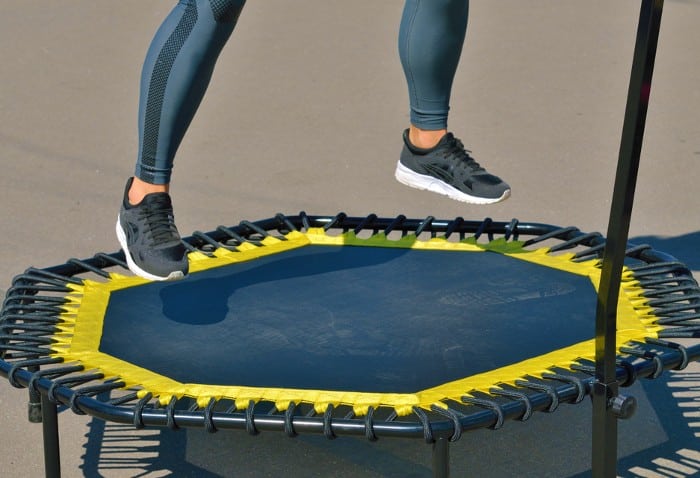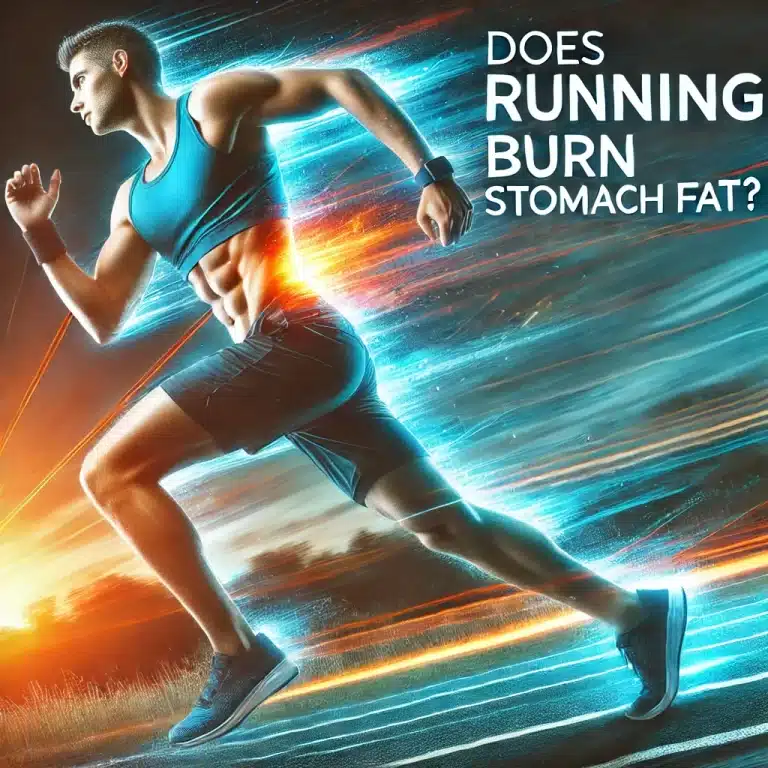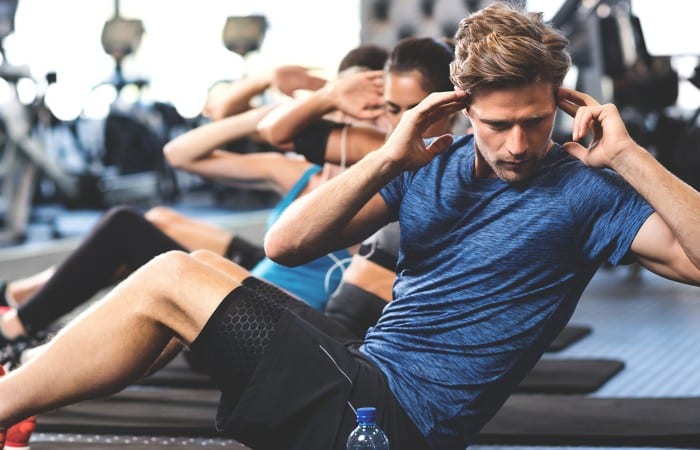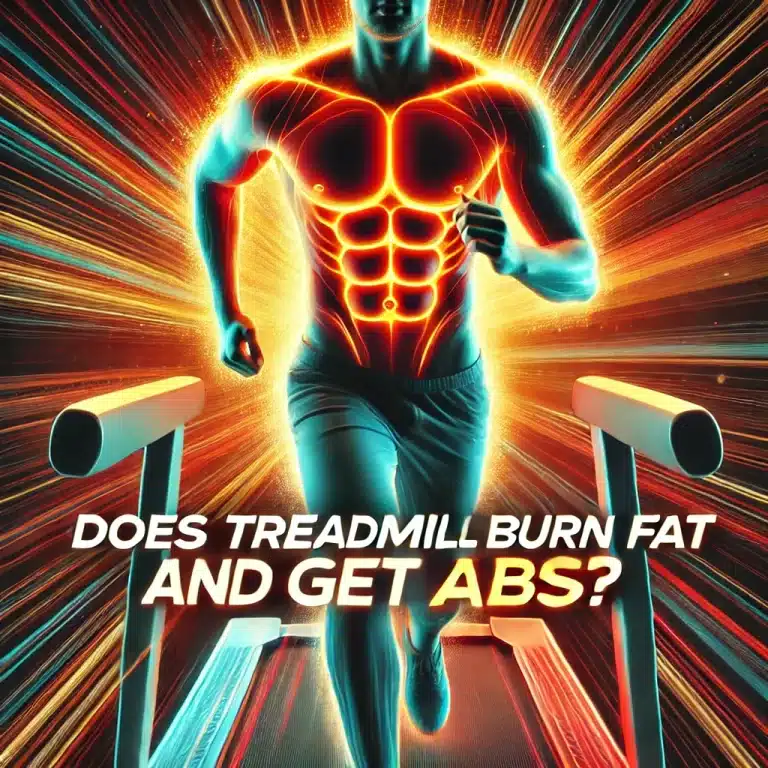How Many Calories Do Squats Burn?
Squats are one of the most effective exercises for building strength, improving endurance, and torching calories. Whether you’re doing bodyweight squats, adding weights, or incorporating squat variations, this powerhouse move works for multiple muscle groups and elevates your heart rate, leading to significant calorie burn. But exactly how many calories do squats burn?
The answer depends on various factors, including your weight, intensity, duration, and whether you’re using additional resistance. In this guide, we’ll break down the science behind calorie burn, how to maximize your squat workouts, and what you can expect based on your fitness level.
How Many Calories Do Squats Burn?
The number of calories burned during squats varies from person to person. However, on average:
- Bodyweight Squats: Burn around 0.32 to 0.48 calories per rep.
- Weighted Squats: Can burn 0.5 to 0.8 calories per rep depending on the load.
- High-Intensity Squat Workouts (HIIT or Circuit Training): Can burn anywhere from 8 to 15 calories per minute.
To give you a clearer picture, here’s a calorie burn estimate based on body weight and workout duration:
| Bodyweight Squats (per minute) | 120 lbs (54 kg) | 150 lbs (68 kg) | 180 lbs (82 kg) | 210 lbs (95 kg) |
|---|---|---|---|---|
| Moderate Intensity (40-50 squats) | 5-7 calories | 7-10 calories | 9-12 calories | 10-14 calories |
| High Intensity (60+ squats) | 8-10 calories | 10-14 calories | 12-16 calories | 14-18 calories |
For weighted squats, caloric burn increases due to the added resistance. For example:
| Weighted Squats (per minute, moderate pace) | 120 lbs (54 kg) | 150 lbs (68 kg) | 180 lbs (82 kg) | 210 lbs (95 kg) |
| Light Weights (10-25 lbs) | 6-8 calories | 8-10 calories | 10-12 calories | 12-14 calories |
| Heavy Weights (50+ lbs) | 9-12 calories | 11-15 calories | 14-18 calories | 16-20 calories |
While these numbers give a general estimate, calorie burn is influenced by multiple variables. Performing slow, controlled squats with a deep range of motion activates more muscle fibers and can increase the energy demand. Similarly, explosive movements such as jump squats or plyometric variations will spike heart rate and calorie burn.
It’s also worth noting that the afterburn effect (EPOC – Excess Post-Exercise Oxygen Consumption) plays a role. Because squats engage large muscle groups like the quads, hamstrings, glutes, and core, they create a higher energy demand that extends beyond the workout. This means your body continues to burn calories even after you’ve finished squatting, particularly if you incorporate resistance or high-intensity training.
Additionally, performing squats as part of a compound movement sequence, such as squat-to-press or squat jumps in a circuit, amplifies calorie expenditure. Pairing squats with exercises like lunges, burpees, or deadlifts can turn your lower body workout into a calorie-torching session.
By tracking your heart rate and workout duration using a fitness tracker or app, you can get a more precise reading of how many calories you burn doing squats. For an even more effective approach, combining squats with progressive overload (gradually increasing weight or reps) ensures continuous adaptation and higher calorie burn over time.
Factors That Affect How Many Calories You Burn During Squats:
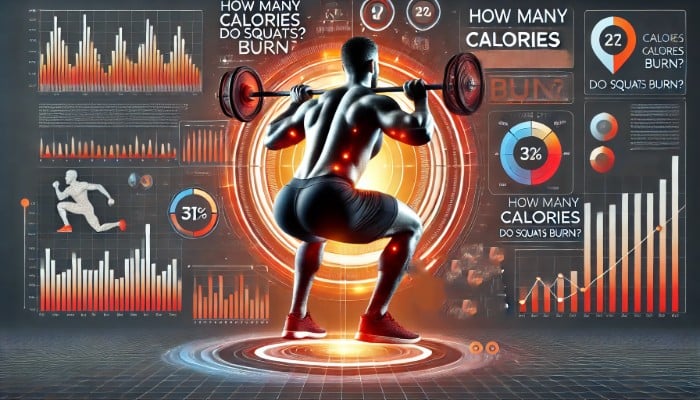
The number of calories burned during squats is not the same for everyone. Here are the key factors that influence calorie expenditure:
1. Your Body Weight
Heavier individuals burn more calories because their bodies require more energy to move. A person weighing 200 lbs will naturally expend more energy than someone weighing 120 lbs performing the same number of squats. More mass means greater resistance against gravity, leading to increased effort and calorie expenditure.
2. Squat Intensity & Speed
The intensity and speed at which you perform squats make a big difference in how many calories you burn. Performing slow, controlled reps with a deep range of motion engages more muscle fibers and burns more energy than rushing through sloppy reps. On the other hand, explosive movements like jump squats or plyometric variations spike heart rate and calorie burn significantly.
3. Use of Weights
Incorporating dumbbells, barbells, or kettlebells increases the overall resistance, forcing your muscles to work harder and expend more energy. The heavier the weights, the more calories you burn since your muscles require more fuel to handle the added load. Additionally, heavier squats recruit more muscle fibers, which in turn increases the afterburn effect (EPOC – Excess Post-Exercise Oxygen Consumption), meaning your body continues burning calories even after you finish your workout.
4. Workout Duration & Volume
More reps and longer workout durations mean higher total calorie burn. However, excessive reps can lead to fatigue, which might reduce workout efficiency. Instead of just increasing reps, consider incorporating progressive overload, where you gradually increase weights or adjust tempo to maximize calorie burn without sacrificing form.
5. Fitness Level & Muscle Efficiency
A well-conditioned individual may burn slightly fewer calories per squat because their muscles and cardiovascular system work more efficiently. Beginners often burn more calories initially as their bodies work harder to adapt to the movement. However, seasoned lifters can counteract this by progressively increasing resistance, changing the tempo, or adding advanced squat variations to keep their metabolism elevated.
6. Rest Periods & Workout Structure
The amount of time you rest between sets plays a role in total energy expenditure. Shorter rest periods (under 30 seconds) keep the heart rate elevated and create a cardio-like effect, leading to more calories burned. Longer rest periods (60+ seconds) allow for heavier lifting but may reduce the total calories burned per session. To strike a balance, mix strength-based heavy squats with high-rep, fast-paced sets to optimize both muscle-building and calorie-burning potential.
7. Squat Form & Range of Motion
Performing deep squats engages more muscles, particularly the glutes, hamstrings, and core, compared to shallow squats. Proper squat mechanics ensure that you’re activating the right muscle groups and maximizing energy expenditure. Engaging more muscles means your body requires more oxygen and more energy, ultimately increasing the number of calories burned per rep.
By focusing on these factors and fine-tuning your squat workouts, you can significantly boost your calorie-burning potential and achieve better overall fitness results.
How to Maximize Calorie Burn with Squats?
If you’re looking to get the most out of your squat workouts and burn as many calories as possible, there are several ways to increase efficiency and intensity. Here’s how:
1. Increase Volume and Frequency
The simplest way to burn more calories is to do more squats. Increasing the number of reps and sets in your workout will naturally lead to greater energy expenditure. However, rather than just adding endless reps, consider using progressive overload, where you gradually increase the weight or resistance over time. This forces your muscles to work harder, leading to higher calorie burn and greater strength gains.
2. Add Resistance with Weights
If bodyweight squats aren’t challenging enough, introducing resistance through dumbbells, kettlebells, or a barbell will significantly increase calorie burn. The added load forces your muscles to engage more, leading to higher energy expenditure both during and after your workout. Heavier weights also increase muscle activation, which in turn boosts metabolism and long-term calorie burn.
3. Shorten Rest Periods
The less time you spend resting between sets, the more calories you’ll burn. Keeping rest periods under 30 seconds maintains an elevated heart rate, turning your squat workout into a form of high-intensity interval training (HIIT). This increases both immediate calorie burn and the afterburn effect, where your body continues burning calories even after your workout is done.
4. Try Squat Variations
Mixing up your squat routine with different variations can target additional muscle groups and boost overall calorie burn. Some high-energy squat variations include:
- Jump Squats – Adding an explosive jump at the top of your squat turns it into a plyometric exercise that increases heart rate and calorie burn.
- Bulgarian Split Squats – This single-leg variation requires more stability and balance, engaging more muscles and increasing effort.
- Goblet Squats – Holding a kettlebell or dumbbell in front of your chest forces your core and upper body to work harder.
- Sumo Squats – A wider stance activates the inner thighs and glutes, challenging different muscle fibers.
5. Incorporate Squats into a HIIT Workout
If you want to maximize fat burning, combine squats with other high-intensity exercises in a circuit-style workout. Pairing squats with movements like burpees, lunges, push-ups, and mountain climbers can skyrocket calorie expenditure and improve endurance.
A quick fat-burning squat circuit could look like this:
- Jump Squats – 30 seconds
- Lunges – 30 seconds
- Burpees – 30 seconds
- Weighted Squats – 30 seconds
- Rest – 30 seconds, then repeat 3-4 rounds
This type of training keeps your body in a constant state of motion, maximizing calorie burn while improving cardiovascular fitness.
6. Focus on Time Under Tension (TUT)
Slowing down your squats, especially during the lowering (eccentric) phase, creates more muscle activation and forces your body to work harder, leading to increased calorie burn. Try counting three to four seconds on the way down before driving back up explosively.
7. Engage More Muscle Groups
Squats are already a compound movement, but engaging even more muscle groups will amplify calorie burn. Holding a weight at chest level (goblet squat) activates the upper body while combining a squat with an overhead press or bicep curl turns it into a full-body move.
8. Maintain Proper Form and Depth
Good squat form ensures that you’re effectively engaging the right muscles while reducing injury risk. The deeper you squat, the more muscle fibers you activate, leading to higher energy demand. Aim to squat until your thighs are parallel to the floor or lower, ensuring that your knees remain aligned with your toes.
By incorporating these strategies, you can turn squats into a highly effective calorie-burning exercise, whether you’re using them for fat loss, muscle building, or athletic performance.
How do Squats compare to Other Exercises for Calorie Burn?
Squats are a powerful lower-body exercise, but how do they stack up against other popular calorie-burning activities? While they effectively build muscle and elevate your heart rate, some exercises burn more calories per minute due to their aerobic intensity. Here’s a comparison of how squats measure up to other common movements:
| Exercise | Calories Burned Per 10 Minutes (150 lbs person) |
| Bodyweight Squats | 70-100 calories |
| Jump Squats | 100-140 calories |
| Running (6 mph) | 100-120 calories |
| Jump Rope | 120-150 calories |
| Rowing (moderate) | 80-110 calories |
| Cycling (moderate) | 90-120 calories |
| Burpees | 120-160 calories |
Squats burn a respectable amount of calories, especially when done at high intensity or with added weight. However, if your primary goal is maximum calorie burn in a short period, exercises that involve continuous movement like running, jumping rope, or burpees tend to burn calories at a faster rate.
That said, squats have a unique advantage over many other calorie-burning exercises. Since they engage large muscle groups, they not only burn calories during the workout but also help build lean muscle mass. More muscle means a higher resting metabolic rate, which translates to more calories burned even when you’re not working out. This long-term benefit makes squats an essential exercise for both fat loss and strength building.
For best results, consider combining squats with higher-intensity movements like jump squats or burpees, or incorporating them into a circuit training workout to maximize overall calorie expenditure. This way, you get the muscle-building benefits of squats while increasing your total calorie burn for fat loss.
Final Thoughts: Are Squats Good for Burning Calories?
Squats are a powerful full-body exercise that engages multiple muscles, improves endurance, and effectively burns calories. The exact number of calories burned depends on weight, intensity, and whether weights are used, but even bodyweight squats can contribute significantly to a calorie-burning workout.
For the best results, focus on progressive overload by increasing reps, weight, or intensity over time. Whether you’re looking to lose weight, build strength, or boost endurance, squats should be a staple in your fitness routine.
So, the next time you drop into a squat, remember, you’re not just building muscle, you’re torching calories and improving overall fitness at the same time!
